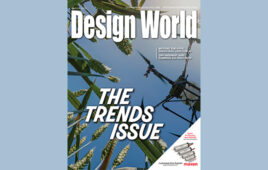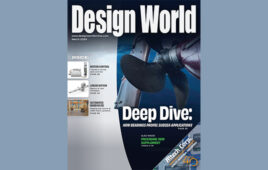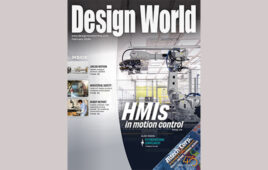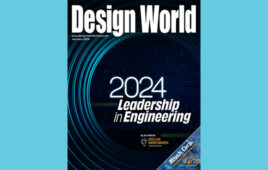In this issue:
2 Updated information on evolving power-transmission designs
8 2017 PTDA Update
50 Linear Guides Rails, Slides & Systems
65 Shock, Vibration Damping
Updated information on evolving power-transmission designs
POWER-TRANSMISSION COMPONENTS are core to the operation of innumerable motion designs wherever electric motors engage loads to execute machine tasks. That’s thanks to their enduring performance and cost effectiveness. But as detailed in the updated sections of this 2017 Power Transmission Reference Guide, applications for power-transmission designs continue to proliferate with technical innovations based on new geometries, materials, and kinematics. Advances in electronics for motion control have made leveraging these mechanical devices easier than ever — yielding levels of precision output once impossible.
In fact, today’s motion designs use an increasingly diverse array of actuators, bearings, brakes, collars, couplings, gearing, and rotary-to-linear devices with ever-increasing performance. Longtime readers of this Power Transmission Reference Guide will notice that we’ve begun to address frequently asked questions related to these specific technologies. What if a nanopositioning application needs higher forces from its actuator? How is ballscrew accuracy defined? What’s the difference between traditional chain drives and rigid-chain actuators? How to specify retaining rings? How do you specify industrial shock absorbers? Where do electromechanical actuators make more sense than those based on fluid power?
That’s just a sampling of new territory we’ve begun to cover.
So please use this Reference Guide as a primer on component functions or as a basis for smart application of evolving motion engineering. In addition, as the world of power-transmission design evolves, count on us on Design World for technology updates that help make specification and integration of components more informed.
Give us feedback or make requests for future editorial by emailing or tweeting to me at [email protected] and @DW_LisaEitel, @Linear_Motion and @Motion_Control.
Connect with the Design World Facebook page at facebook. com/DesignWorldNetwork, and let us know about your design challenges and successes.
 One last note: This Reference Guide is part of a four-installment series that Design World publishes. April brings the Motion Trends issue; August brings the 2017 Motion Systems Handbook; and November brings the beautifully illustrated Motion Casebook. These issues will detail the latest in electronic and programming technologies for motion controls, and they will showcase applications stories on how some OEM and plant engineers are tackling modern motion-design challenges.
One last note: This Reference Guide is part of a four-installment series that Design World publishes. April brings the Motion Trends issue; August brings the 2017 Motion Systems Handbook; and November brings the beautifully illustrated Motion Casebook. These issues will detail the latest in electronic and programming technologies for motion controls, and they will showcase applications stories on how some OEM and plant engineers are tackling modern motion-design challenges.
Also get breaking motion-industry announcements (not to mention the newest technical features) on our motion tips sites:
Thank you for reading.
Filed Under: DIGITAL ISSUES • DESIGN WORLD





This is really good content for me as a Mechatronics student, all this site, plus this magazine keeps me updated with the new technology in the world. Regards from Mexico, Juarez.
Thank you for reading, Edgar!